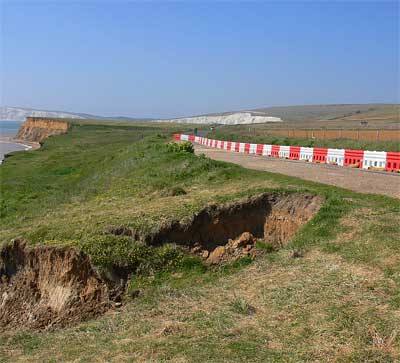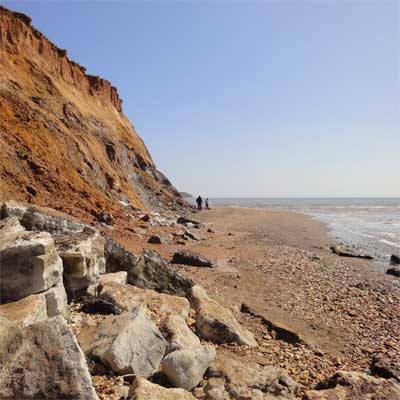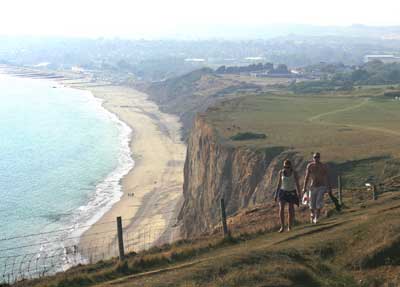The butterfly that stamped
- Complaining about the Mainland - 17th August, 2024
- New island designation – is it just greenwash? - 26th April, 2024
- Police and Crime Commissioners – a solution or a problem? - 21st April, 2024
In the news on the Isle of Wight right now is the Military Road, a tourist trail of great scenic beauty that takes visitors along the south-west coast of the Island. the trouble is, it’s getting closer and closer to the cliff each year, as the soft cliffs erode away. And now the edge of the cliff is just 90cm from the edge of the roadside… meaning that it won’t be long before the whole thing goes. When it does, there’s so far no intention to replace it, and so that through-route will be lost – although it will still be easy enough to go along the road as far as it goes, from either side. Needless to say that’s causing some local controversy.

The Ranger went down to have a farewell journey along the old road before it finally fell in and took the opportunity to have a closer look than one normally gets when zooming by in a car. Of course, as ever on the Island, it turned out to have a wildlife aspect to it.

This part of the Island has a characteristic geomorphology which creates small, soft cliffs that constantly erode into the sea. A never-ending supply of fresh material rolling down onto the beach makes this coastline famous for fossil hunters, and every now and again some new wonder is uncovered, ranging from petrified forests to dinosaur footprints. It also means, of course, that houses, and indeed roads, built on top of these cliffs have a rather precarious existence. After gawping at the collapsing road I clambered down the cliffs to have a look at it from the sea’s point of view – and found a beautiful, ephemeral landscape.
In the video above, if you look carefully you can see the cliff actually moving, as a soft, fluid mudslide slowly slumps onto the beach and a few fragments of clay roll down the slope. This was typical of the cliffs. Embedded in the face from time to time we could also see grass and plants from the fields above – this stuff really is fresh. In many other places on the mainland and indeed on the Island, areas such as this have been controlled and constrained, at least for now, by engineering works to protect the foot of the cliff from the sea. Here though, the great extent of the cliffs, the lack of any settlement on top of them and the very soft nature of the rocks has meant that the only strategy ever followed has been to let the sea reclaim its own. It is, ironically enough, this uniquely extensive, natural and unengineered coastal landscape that makes this the most spectacular and best-visited scenic area of the Island – the irony here being that some people demand coastal protection be undertaken to defend the cliffs or the road, amongst other things in order to support the local tourist industry.

The flagship animal of the soft cliff community on the Isle of Wight is the Glanville fritillary, Melitaea cinxia. This charming little creature is at the northern limit of its range in the British Isles and is found mainly on the south-west coast of the Isle of Wight and in a couple of locations on the south Hampshire coast. It is a specialist of cliff edges, with the caterpillars feeding in characteristic wriggling webby nests on plantain plants. The larvae quickly devour plants and then set off to find the next one – the video below shows one of them off on its travels. As well as a shiny red head they have entertainingly red ‘boots’ – these are fun caterpillars to watch.
So if you don’t come to the Island this summer you probably won’t get to drive all the way along the Military Road. In fact, by the time you read this it’s probably fallen in already. But don’t mourn its passing for too long: it was going over the edge sooner or later anyway. We will still be able to get down there to see the coast, and the tourists will no doubt still come even if they have to turn around rather than drive through. The breach of the Military Road will bring opportunities to stop and appreciate an extraordinary landscape and habitat, rather than drive straight through it. By understanding the positive aspects of constantly renewing soft cliffs we can enjoy and understand something about the importance of working with natural processes, not against them.

